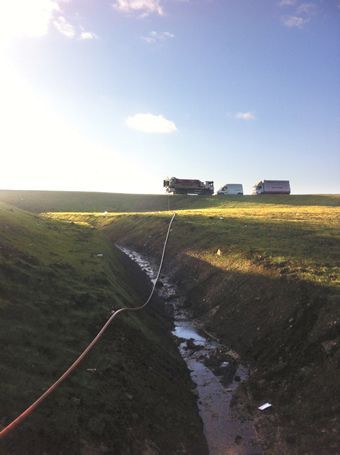Lanes lining teams get approach roads ready for new Forth Bridge

Lanes Group’s ‘no dig’ sewer rehabilitation expertise has played a part in paving the way for the construction of the new £1.4 billion Queensferry Crossing.
Its drainage engineers have been commissioned to renew storm drains along the approach roads to the new bridge that will link Edinburgh with Fife across the Firth of Forth.
They used a technique called CIPP to line around 200 metres of existing 300mm drainage pipelines along the southern approach to the new bridge.
Alastair Knox, Area Development Manager for Rehabilitation and Lining Services for Lanes Group in Scotland, said: “The contractor building the approach roads needed to connect the new roads to the existing road network.
“As part of that process, the drainage lines on the existing roads had to be checked and rehabilitated, where necessary.
“We carried out a CCTV drainage survey using robotic video surveillance cameras and identified some defective pipes that required rehabilitation. As instructed by our client, we lined the defective sections of pipe on time.
“In all, around 200 metres of pipe were renewed. They were about eight metres underground.
“However, because of our ‘no dig’ expertise, this sort of depth isn’t a big problem and the lining project was completed successfully.”
CIPP, or Cure in Place Pipe lining, is a trenchless sewer rehabilitation technique that avoid major excavation work, speeding up drain rehabilitation and significantly reducing costs.
A flexible tube-shaped liner made of flexible and impregnated with resin is fed into the pipe.
It is then forced against the pipe wall with water or air pressure. As the resin dries it hardens, forming a tough and waterproof new skin inside the pipe.
Queensferry Crossing is one of the biggest construction projects currently underway in Scotland.
It is being built alongside the current Forth Road Bridge, which is due to become a public transport crossing when the new bridge opens in 2016.
Queensferry Crossing is a cable-stayed bridge and will 1.7 miles long. About 2.5 miles of new approach roads on both side the bridge are being built.







